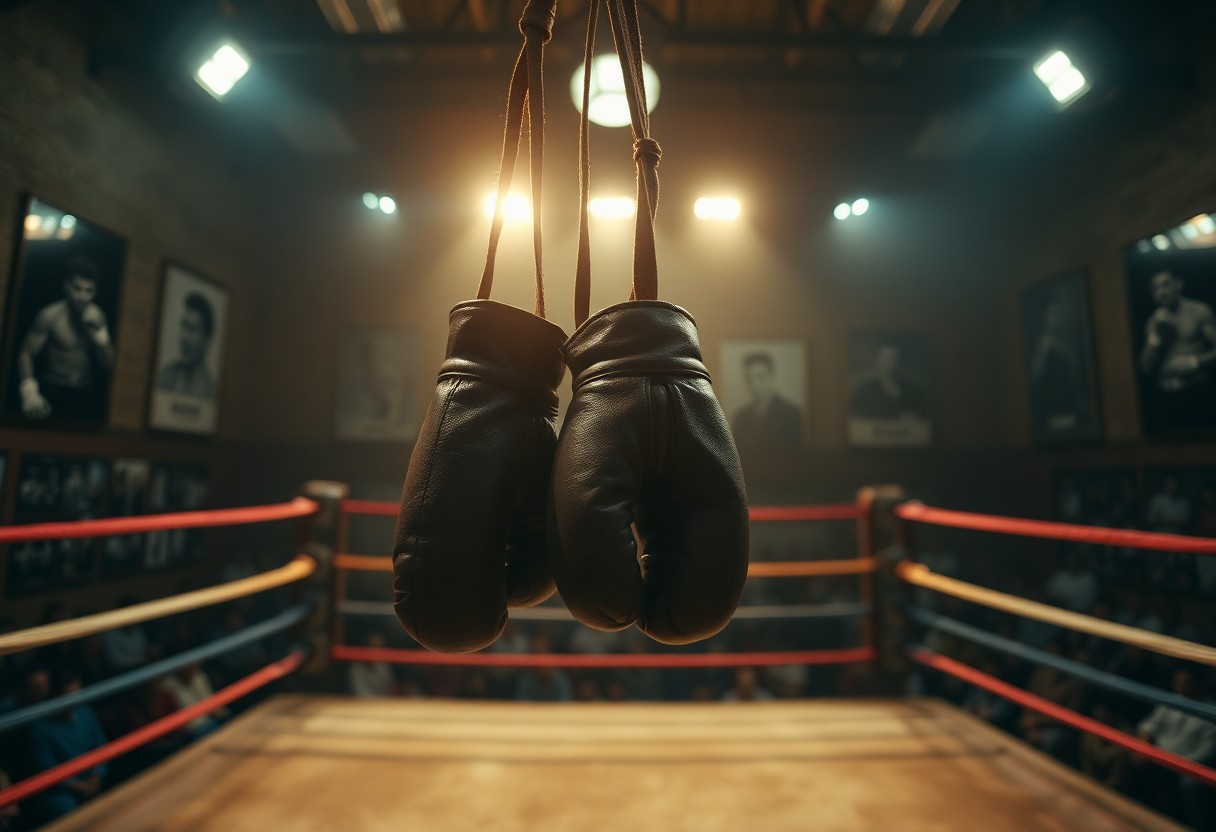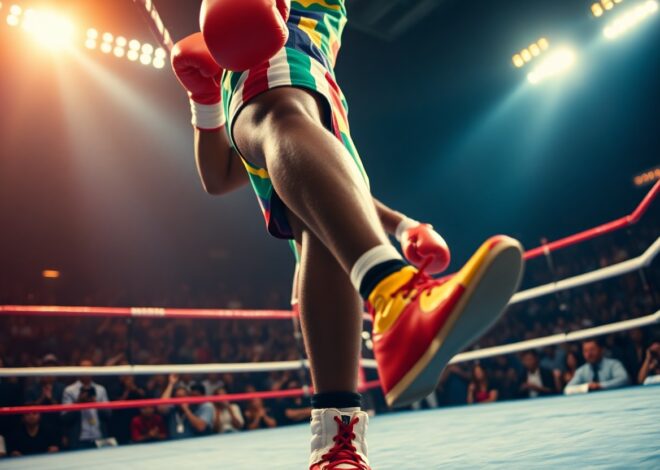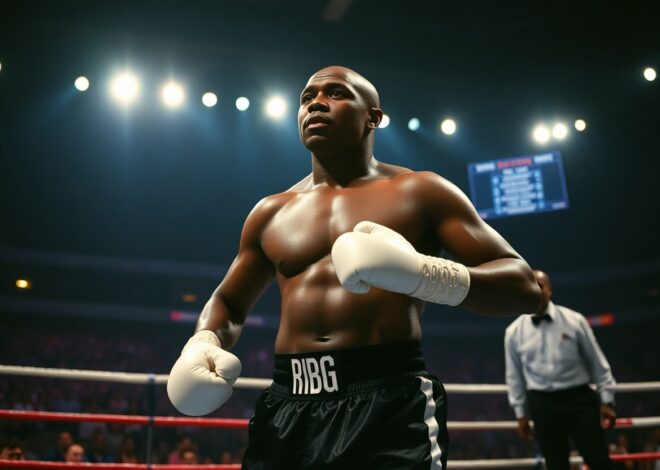
How Boxing Legends Changed The Way We See The Sport?
Over the decades, boxing legends like Muhammad Ali, Joe Louis, and Mike Tyson have profoundly shifted perceptions of the sport through their exceptional skills and charismatic personalities. These athletes not only showcased bravery and resilience in the ring but also leveraged their platform to address social issues, making them cultural icons. The evolution of their fighting styles and groundbreaking achievements challenged traditional views, inspiring countless fighters and fans worldwide. This guide explores how their legacies continue to shape modern boxing, influencing training methods, viewing demographics, and the sport’s overall cultural significance.
Types of Boxing Legends
Boxing legends can be categorized into various types that highlight their unique contributions. Each type stands out due to their significant impact on the sport and culture, shaping perceptions for future generations. Often, these legends exhibit extraordinary skills or achieve remarkable feats within the ring. Champions of the Ring dominate with their exceptional fighting prowess, while Influential Coaches mold the next generation of fighters through their strategic insights.
- Champions of the Ring
- Influential Coaches
- Cultural Icons
- Trailblazers
- Innovators
Perceiving these categories helps to appreciate the diverse roles that legends play in boxing’s evolution.
| Type | Description |
| Champions of the Ring | Fighters who dominate their weight categories and achieve greatness. |
| Influential Coaches | Mentors who shape fighters’ careers through training and strategy. |
| Cultural Icons | Boxers who transcend the sport to impact society. |
| Trailblazers | Pioneers who break barriers within the sport. |
| Innovators | Those who introduce new techniques or training methods. |
Champions of the Ring
Champions of the Ring are defined by their ability to secure titles and dominate their divisions. Fighters such as Floyd Mayweather Jr. and Sugar Ray Leonard not only showcase incredible skills but also set new standards for athletic excellence, inspiring countless aspiring boxers. Their achievements resonate through history, creating legacies that elevate the sport’s reputation.
Influential Coaches
Influential Coaches play a pivotal role in the development of elite boxers, imparting knowledge of technique, strategy, and mental resilience. Figures like Angelo Dundee and Freddie Roach have transformed ordinary fighters into champions through tailored training regimens. Their teachings not only enhance fighters’ performance but also profoundly impact the sport itself, ensuring a legacy of excellence and innovation.
Coaches like Nacho Beristain have a unique knack for recognizing and nurturing raw talent, adapting training methods to suit individual fighters. Their approach extends beyond just physical training; it involves developing mental toughness and discipline necessary for success in the ring. Successful coaches often analyze opponents meticulously, equipping their fighters with competitive advantages. This holistic influence creates champions who excel not only in skill but also in mental fortitude, shaping the sport for years to come.
Factors That Shaped Boxing Legends
- Historical Context
- Personal Struggles
- Socioeconomic Background
- Training Regimens
- Cultural Impact
Boxing legends emerged not just from their talent but also due to various factors that shaped their careers. Socioeconomic backgrounds, training regimens, and cultural influences carved their paths. The influence of their historical context also played a role in defining their legacies. Assume that each of these aspects interlinked to elevate their status in the sport.
Historical Context
The historical backdrop against which a boxer rises greatly impacts their journey. For instance, during the Great Depression, fighters like Joe Louis offered hope and resilience, uniting communities through their struggles and victories. The societal issues of their times defined their narratives and motivated them to transcend the sport.
Personal Struggles and Triumphs
A deep examination of boxing legends reveals their personal struggles and triumphs, often overshadowed by their athletic performances. Legends such as Muhammad Ali faced immense challenges, including social stigma and health issues. These obstacles not only shaped their character but also resonated with fans worldwide, inspiring many to overcome their circumstances.
Boxers like Mike Tyson showcased a tumultuous life marked by personal setbacks, including juvenile challenges and adult controversies. These struggles often fueled their drive, creating legendary comebacks and inspiring narratives. Ali’s battle with Parkinson’s disease, despite his exceptional career, humanized him, adding depth to his legacy. Each triumph against adversity resonates, illustrating how boxing is not just about physical strength but also mental resilience and personal growth.
Pros and Cons of Boxing Legends’ Influence
Pros | Cons — | — Increased popularity of boxing | Risk of glorifying violence Inspiration for new generations | Controversies over personal conduct Elevated standards of athleticism | Disputes over fight legitimacy Growth of women’s boxing | Potential for overshadowing current fighters Philanthropic contributions | Pressure on younger boxers to emulate Cultural impact and representation | Exploitation by promoters Innovations in training and strategy | Early retirements due to fame Enhanced media coverage | Detrimental health consequences Globalization of the sport | Loss of focus on sportsmanship
Positive Contributions to the Sport
Boxing legends have made significant contributions that have shaped the sport for the better. By elevating the sport’s profile, they attract global audiences and inspire countless individuals to take up boxing. Figures like Muhammad Ali not only showcased athletic prowess but also emphasized social justice, making them symbols of positive change. Their stories help to humanize the athletes, turning them into icons that represent not just the sport, but broader cultural movements, enhancing the legacy and appeal of boxing.
Controversies and Criticisms
Despite their achievements, boxing legends are often surrounded by controversy. Their personal lives can overshadow their athletic accolades, leading to public scrutiny and debates about morality. Instances of legal issues, violent behavior, or controversial statements not only tarnish individual reputations but can also reflect negatively on the sport itself. The discourse surrounding these figures often raises questions about accountability and the true impact of their legacies on aspiring athletes and the boxing community.
For example, Mike Tyson’s history with legal troubles and aggressive behavior has sparked significant debate over the messages sent to younger boxers. This duality, where legends inspire yet also embody controversial traits, contributes to a complex narrative in boxing. Furthermore, instances of match-fixing accusations against some legendary fighters can lead to widespread skepticism about the integrity of the sport, challenging the notion of fair competition among aspiring boxers.
Key Tips from Boxing Legends
- Discipline is key to success.
- Focus on technique over brute strength.
- Adaptability can turn the tide in a match.
- Mental toughness is as vital as physical training.
Assume that adopting these principles can elevate any athlete’s performance in the ring.
Training Regimens
Boxing legends emphasize the importance of well-rounded training regimens that include cardiovascular conditioning, strength training, and skill drills. For instance, Ali dedicated hours to shadow boxing, roadwork, and sparring, ensuring his body was both agile and powerful. The right combination of exercises not only enhances endurance but also sharpens striking precision and footwork.
Mental Strategies
Mental strength is indispensable, with champions often employing visualization techniques and self-talk to maintain focus. Tyson, for example, would visualize his victories before matches, instilling confidence and eliminating doubt. Such practices can help boxers handle pressure and navigate the mental battlefield of the sport.
Incorporating mental strategies like these can be transformative. Utilizing visualization allows boxers to rehearse their performance, while positive affirmations reinforce self-belief. Legends like Joe Frazier relied on a mantra to bolster his confidence before fights, showing that a strong mindset can be just as pivotal as physical readiness. Balancing both aspects leads to a holistic approach to combat sports.
Step-by-Step Breakdown of Iconic Fights
| Fight | Key Moments |
|---|---|
| Ali vs. Frazier I | First round intensity and Ali’s rope-a-dope strategy. |
| Tyson vs. Spinks | Quick knockout in just 91 seconds, showcasing Tyson’s power. |
| Foreman vs. Ali | Ali’s stamina and strategy in the “Rumble in the Jungle.” |
Techniques and Tactics
Boxing legends often employed unique techniques that defined their fighting styles. For instance, Muhammad Ali’s famous rope-a-dope allowed him to absorb punches while conserving energy, leading to a stunning comeback. Similarly, Mike Tyson’s peek-a-boo defense facilitated explosive counters, overwhelming opponents before they could react.
Behind-the-Scenes Decisions
Decisions made outside the ring significantly influenced the outcomes of various fights. Selecting the right opponents, strategic training camps, and the role of promoters often set the stage for legendary matchups. Boxing icons had to carefully evaluate their preparation to enhance their chances of victory.
For example, prior to the historic bout between Ali and Foreman, Ali’s camp chose the Congolese location for its humidity, hoping to exploit Foreman’s stamina. Similarly, Tyson’s ascent involved astute management in choosing fights that highlighted his explosive power while minimizing risk. These behind-the-scenes tactics not only shaped fight preparation but also impacted legacies and career trajectories.
How Legends Altered Public Perception
Media Representation
Boxing legends have transformed how the sport is portrayed in the media, shifting narratives from mere brutality to displays of skill and artistry. Fighters like Muhammad Ali and Mike Tyson commanded attention not just for their power but for their charisma, leading to extensive coverage that highlighted their personalities and life stories. This, in turn, has influenced audiences’ views, turning boxing into an intellectual and emotional spectacle rather than just a physical contest.
Cultural Impact
The influence of boxing legends extends beyond the ring, permeating various aspects of culture. Figures like Joe Louis and Floyd Mayweather Jr. have become cultural symbols, representing struggles against societal issues and achieving personal triumphs. Their journeys resonate deeply, inspiring generations and shaping public discourse around race, identity, and perseverance in America.
Furthermore, the cultural impact of boxing legends is evident in music, fashion, and literature. The rise of hip-hop has often integrated boxing references, with artists drawing parallels between the fights and their personal battles. For example, tracks by artists like Kanye West and JAY-Z frequently celebrate the tenacity and resilience associated with boxers. This crossover has not only cemented boxing’s place in contemporary culture but has also highlighted its significance as a metaphor for life’s challenges, encouraging a legacy that transcends the sport itself.
Conclusion
With this in mind, the impact of boxing legends transcends their athletic achievements; they have redefined perceptions of the sport itself. Iconic figures such as Muhammad Ali, Mike Tyson, and Floyd Mayweather have shaped the narratives around boxing, influencing culture, promoting social change, and pushing the boundaries of what it means to be a fighter. Their legacies continue to inspire new generations of boxers and fans alike, demonstrating that the sport is not only about physical prowess but also about character, resilience, and cultural significance.
FAQ
Q: How have boxing legends influenced the popularity of the sport?
A: Boxing legends like Muhammad Ali, Mike Tyson, and Floyd Mayweather brought immense attention to the sport through their distinctive fighting styles, charisma, and personal stories. Their success in and out of the ring helped attract diverse audiences, leading to increased viewership, ticket sales, and merchandise revenue, ultimately elevating boxing’s profile globally.
Q: In what ways have boxing legends transformed training and technique in the sport?
A: Legends in boxing have introduced innovative training methodologies and unique techniques that have shaped modern boxing. Fighters like Sugar Ray Leonard and Manny Pacquiao emphasized the importance of speed and footwork, while others highlighted strength and conditioning. Their approaches have set new standards, influencing how future generations train and compete.
Q: What impact have boxing legends had on social and cultural perceptions of the sport?
A: Boxing legends have often used their platforms to address social issues, influencing public perception of the sport. Figures like Muhammad Ali advocated for civil rights, while others have tackled themes of resilience and perseverance. Their legacies extend beyond boxing, promoting the sport as a vehicle for change and inspiring people worldwide.



